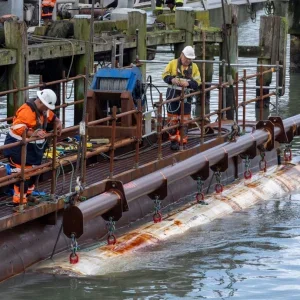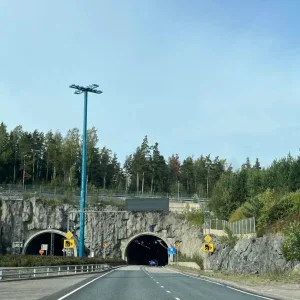The final breakthrough took place on the longest rail tunnel in Belgium, the 5.94km Soumagne tunnel, on Wednesday 20 October.
The contractors celebrating the event consisted of Vinci Construction Grands Projets and CFE, a Belgian subsidiary of Vinci (lead contractor, 25%), Bouygues TP and Bouygues Belgium (25%), Eiffage TP and its subsidiary Duchêne (25%), and Wayss & Freytag/Galere (25%).
The team has been working on the project since May 2001, following the contract award in March 2001 by the client Société Nationale Des Chemins de Fer Belges (SNCB), Belgian Rail. The engineer for the project is Tuc-Rail, a subsidiary of SNCB.
The double track, 100m2 cross sectional area single tube tunnel, that heads out of Liège towards Germany, consists of 5,940m tunnel through rock, with a short cut and cover section at each end. The cut and cover section is 177m long on the Liège side and 413m on the German side.
The tunnel has a maximum overburden of 130m.
From east to west, the tunnel passes through 3,300m of Westphalian schist, then a 50m intersection with the Magnée Fault is followed by 650m of Viséan limestone, with a final 1,900m section running through Namurian limestone.
The project has a budget of US$203M and will enable high-speed trains to travel at speeds of up to 200km/hr along the eastern branch of Belgium’s rail network.
The tunnel was driven by drill and blast concurrently from four faces to speed up the project schedule. The headings were progressed from each end, and also in opposite directions from the 30m deep, 30m diameter shaft, sunk at the tunnel’s midpoint. Each face was worked on three shifts around the clock, with an average advance of 20m per face per week.
Civil works are planned to be completed by the autumn of 2005 with commercial use planned for 2007.







